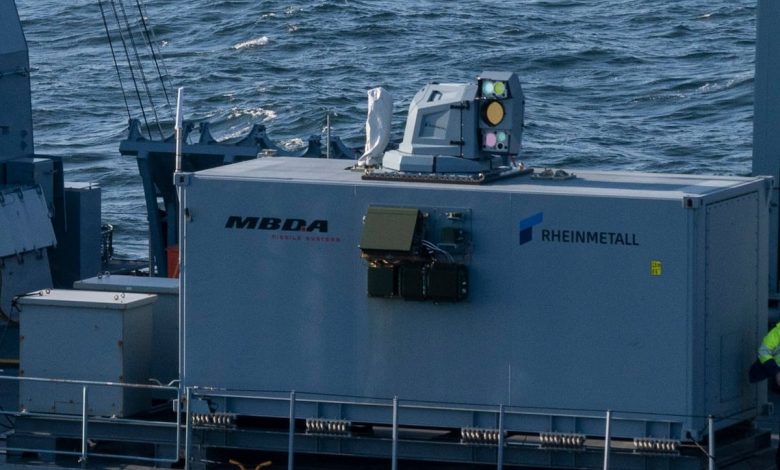Rheinmetall, MBDA tout German shipborne laser gun for zapping drones

BERLIN — The German military has received a demonstrator for a high-energy laser weapon developed by Rheinmetall and MBDA, marking a milestone toward fielding an operational directed-energy system for naval use by 2029.
The containerized laser system was relocated to the Laser Competence Centre at the Technical Centre for Weapons and Ammunition (WTD 91) in Meppen on Oct. 28, following a year-long trial phase aboard the German Navy frigate Sachsen, Rheinmetall said in a statement. The hand-off comes after the demonstrator completed more than 100 live-firing tests under operational maritime conditions, proving its ability to track and engage drones and other fast-moving targets.
The system demonstrated what Rheinmetall described as a first for Europe: successful target engagement “in front of blue sky,” meaning without using terrain as a backstop for the laser beam. The trials validated the weapon’s tracking capability, precision and reaction speed against drones, which the companies emphasized as “one of the most pressing challenges” in modern warfare.
According to a statement by the two defense contractors, the laser weapon is designed to complement conventional cannons and guided missiles, particularly for defense against drones, drone swarms, speedboats, and potentially guided missiles at close range. Future iterations could be scaled up to engage supersonic missiles, rockets, and even mortar and artillery shells, Rheinmetall said.
The two German companies have collaborated on laser weapon development since 2019, with responsibilities divided between them. MBDA Germany handles target detection and tracking, the control console, and integration with command-and-control systems, while Rheinmetall oversees the aiming system, beam guidance, the high-energy laser source, and mechanical integration aboard naval platforms.
The demonstrator currently operates at approximately 20 kilowatts, suitable for neutralizing small unmanned aerial vehicles and light surface targets. However, the architecture is designed to be scalable, with future versions expected to exceed 100 kilowatts for engaging larger threats.
The system will now undergo further land-based drone defense testing at WTD 91, one of the largest fully instrumented ground firing ranges in Western Europe. If trials continue to meet German military requirements, procurement decisions could come within a few years, placing Germany among a small cadre of nations with operational naval laser weapons alongside the United States and Israel.
Linus Höller is Defense News’ Europe correspondent and OSINT investigator. He reports on the arms deals, sanctions, and geopolitics shaping Europe and the world. He holds a master’s degrees in WMD nonproliferation, terrorism studies, and international relations, and works in four languages: English, German, Russian, and Spanish.







